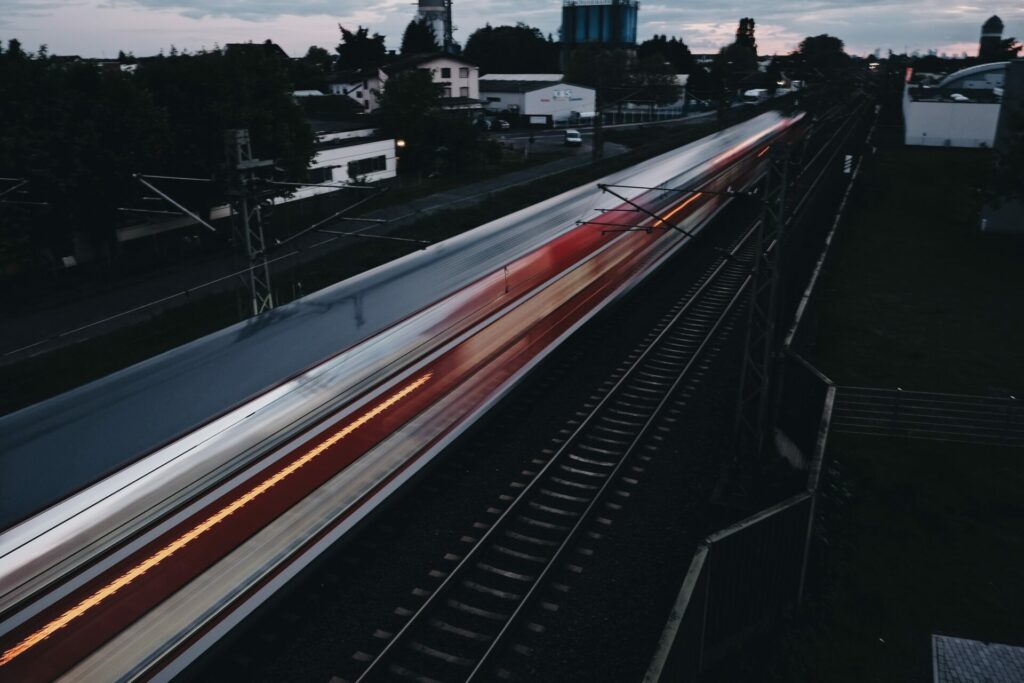Have you ever thought about how the Internet of Things (IoT) could revolutionize the way we travel by train? From reducing energy consumption to enhancing passenger experience, IoT applications have the potential to make train travel more sustainable and enjoyable. In this article, we will explore five innovative IoT applications that can significantly improve the sustainability and efficiency of train travel. Whether you are a frequent train commuter or simply interested in the potential of IoT, read on to discover how digital railways can make a difference in our transportation system.
1. IoT Enables Real-Time Monitoring of Railroad Infrastructure
IoT technology is revolutionizing the railway industry and enabling real-time monitoring of railway infrastructure. With the use of sensors and other intelligent devices, railway operators gather and analyze data closer to where it is collected to allow for near-real-time decision-making and responsiveness. This low latency computing power enables solutions such as railway obstacle detection, recognition, dynamic digital signage, and interactive kiosk content and passenger flow monitoring.
Furthermore, IoT devices support railway operators to maximize the value of existing systems by integrating information technology (IT) with operational technology (OT) and leveraging aggregate and analyze data across the whole railway system. This new information helps streamline business processes, generates insights that can drive new innovative solutions and services, and reduces downtime.
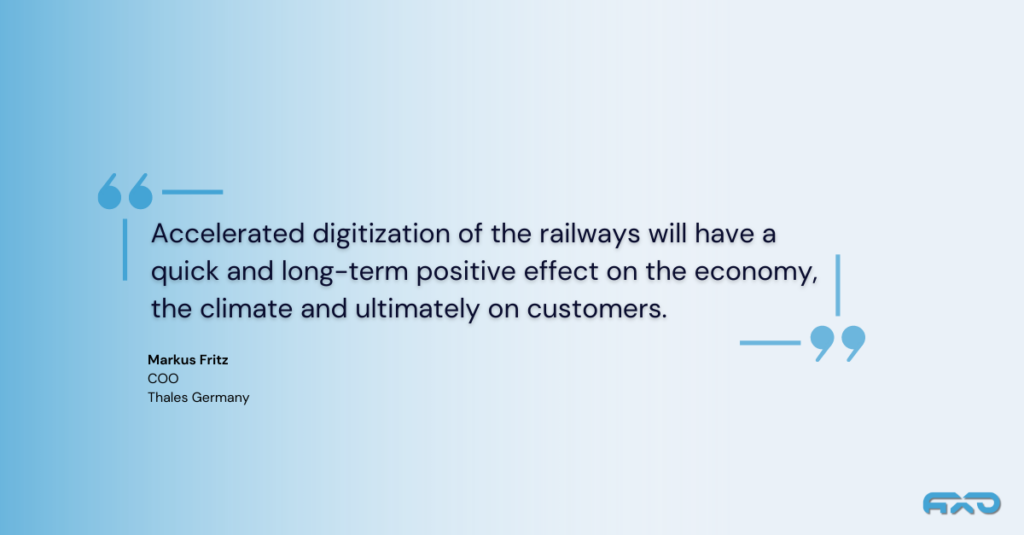
2. Predictive Analytics as the Base for Digital Railways
Predictive analytics can be a game-changer when it comes to proactive maintenance train systems. Real-time data from the sensors is analyzed using algorithms and predictive models to detect potential problems before they occur. The result: proactive maintenance instead of reactive emergency repairs.
By using predictive analytics, rail operators can avoid unexpected breakdowns and reduce maintenance costs by only carrying out maintenance work when it is necessary. This makes the entire train system easier to plan, which in turn leads to fewer delays and train cancellations. A good and important investment in customer satisfaction!
We go into more detail on the benefits of a data-based approach to digital maintenance in our article “Digital Maintenance of Rail Infrastructures: The Key to Efficient Train Operations“.
Canada Pacific Railways (CP) has been using predictive analytics for several years with success; CP’s patented algorithm has achieved a 95 percent reduction in outages during scheduled operations. Trains run significantly faster and safer.
The technology is also already being used successfully in Japan.
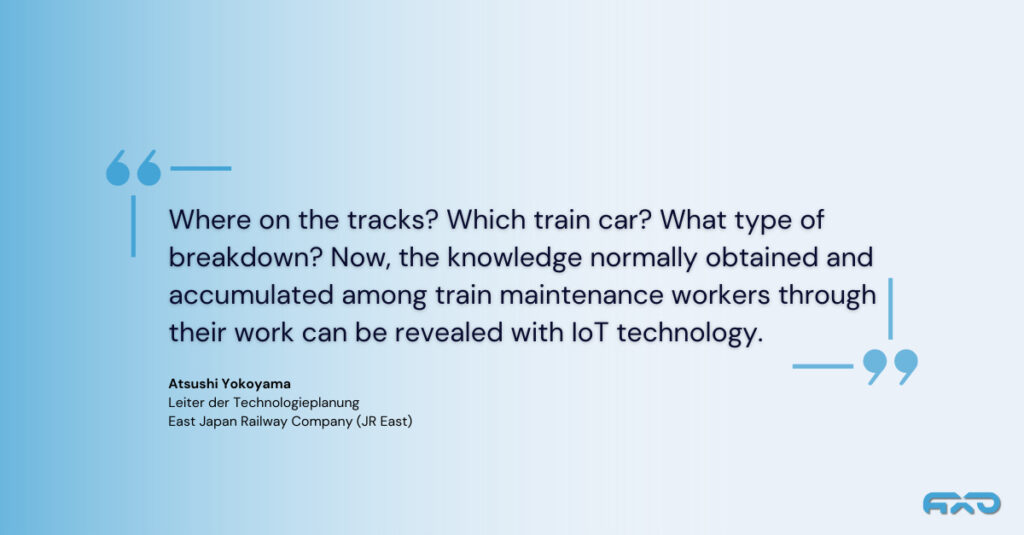
3. Improved Passenger Safety Through IoT-Enabled Track Monitoring
Public transportation, especially rail transport, is a crucial mode of commuting for millions of people every day. Ensuring their safety is a top priority for rail operators worldwide. It can be improved through IoT-based track condition monitoring (TCM).
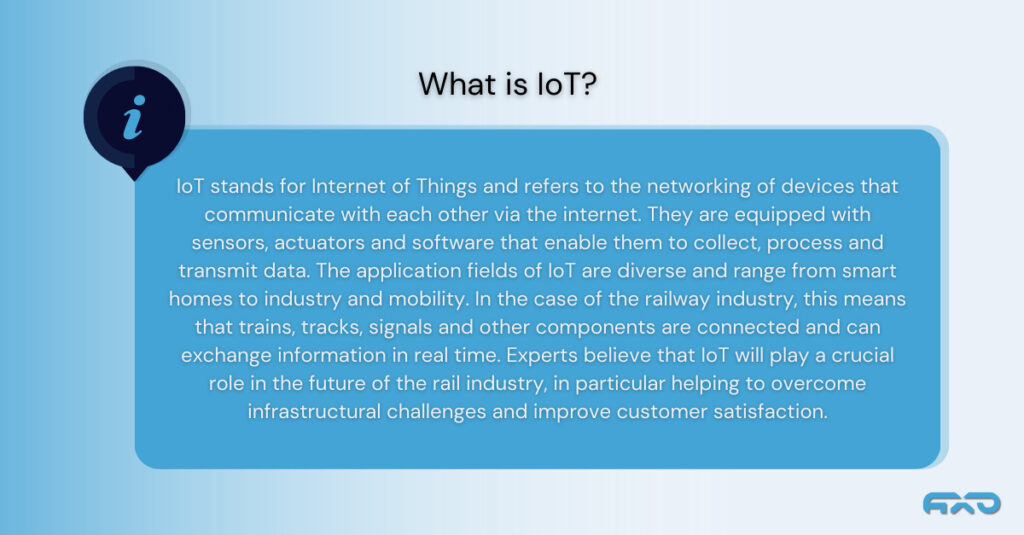
IoT sensors on the tracks or switches measure important parameters such as temperature, load and vibration. Deviations from the norm are an alarm signal that potential defects are imminent. This can result in serious accidents, such as derailments. As soon as anomalies occur, a maintenance team can be dispatched to identify and repair potential damage before it poses a safety risk to passengers.
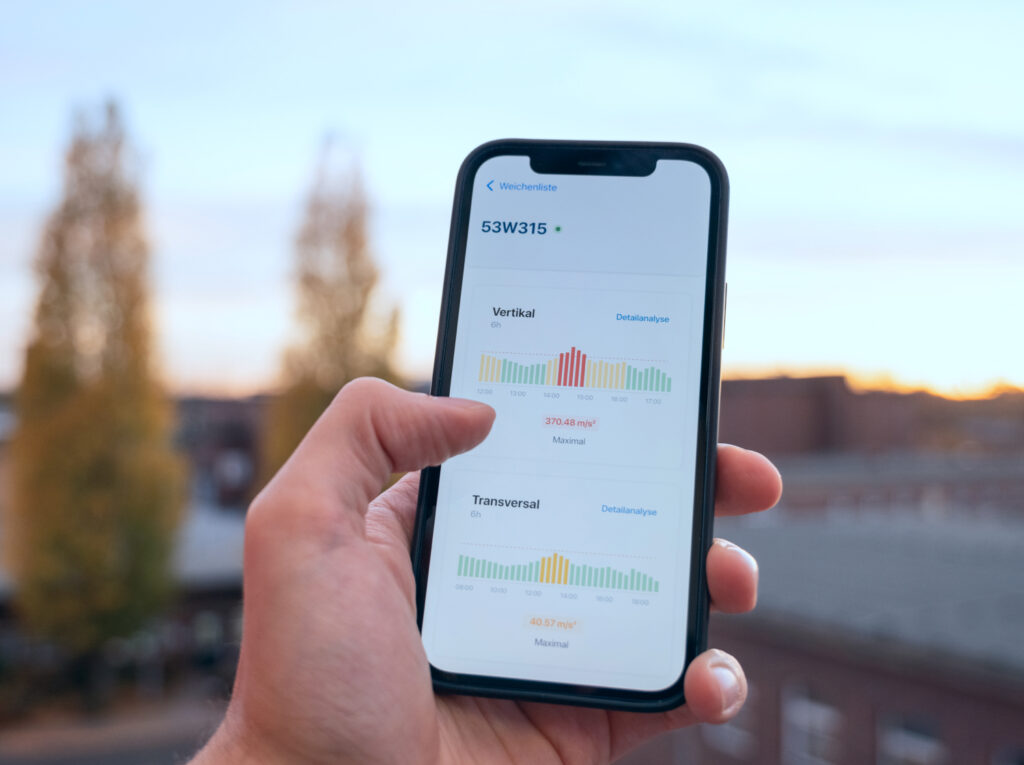
Real-time monitoring of tracks and switches is also used to detect anomalies caused by environmental factors such as extreme weather events. Rail operators can immediately adjust their timetables or reroute trains, minimizing hazards.
Even though the focus here is on passenger safety: The use of IoT sensors on tracks and switches also ensures improved efficiency and thus cost savings for rail operators. As fewer manual inspections are required, maintenance work can be carried out more quickly and efficiently.
4. Digital railway enhances more passenger comfort
The indoor climate plays an important role in comfort on train journeys. At the latest, since the windows – as in most trains – can no longer be opened, a central control system ensures the right temperature in summer and winter. Here, too, there is room for improvement: IoT-based climate control can ensure the perfect temperature and humidity for passengers and thus improve their overall experience. The same goes for lighting systems, both on the train and at stations. IoT can also be used to monitor air quality and alert when particulate matter levels are too high, protecting passengers’ health.
Another point is to monitor passenger density and track their flows. Crowded trains and platforms are often very unpleasant for passengers because they feel crowded and latently unsafe. Apart from that, crowds of people boarding and disembarking lead to train delays. With the help of data analyzes, such crowds can be quickly dispersed by allowing passengers to see the occupancy rate on displays and to avoid them – or even to be guided directly to other doors by intelligent guidance. Such a passenger guidance system also makes it easier to find a free seat.
5. Optimization of energy consumption through IoT
This point has less to do with improving rail travel than with the aspect of sustainability. Even if the railway is the most environmentally friendly means of mass transport, railway operators must also continue to focus on energy optimization.
IoT applications also lend themselves to this case. Sensors are already being used to monitor energy consumption and identify ways to reduce it. For example, they can monitor air resistance, which can be reduced by making adjustments to train design or speed. Monitoring track conditions identifies areas where trains should slow down to reduce energy consumption. Optimizing energy consumption means that trains reduce their carbon footprint and thus make an important contribution to more sustainable mobility.
Conclusion:
When we talk about the future of mobility, there is no way around digital rail. Overall, the digitalization of rail contributes to making rail transport smarter, more connected, more efficient, safer and more comfortable. IoT technology has the potential to revolutionize the industry.
Follow us on LinkedIn and follow the development of the digital track!

